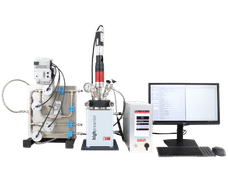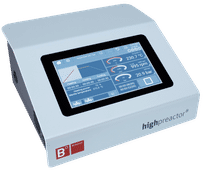Turning dirty tinfoil into biofuel catalyst
A researcher at Queen’s University Belfast has discovered a way to convert dirty aluminium foil into a biofuel catalyst, which could help to solve global waste and energy problems.
In the UK, around 20,000 tonnes of aluminium foil packaging is wasted each year - enough to stretch to the moon and back. Most of this is landfilled or incinerated as it’s usually contaminated by grease and oils, which can damage recycling equipment.
However, Ahmed Osman, an Early Career Researcher from Queen’s University’s School of Chemistry and Chemical Engineering, has worked with engineers at the university to create an innovative crystallisation method, which obtains 100% pure single crystals of aluminium salts from the contaminated foil. This is the starting material for the preparation of alumina catalyst.
Usually, to produce this type of alumina it would have to come from bauxite ore, which is mined in countries such as West Africa, the West Indies and Australia, causing huge environmental damage.
Osman, who took on the project under the University’s Sustainable Energy, Pioneering Research Programme, has created a solution which is much more environmentally-friendly, effective and cheaper than the commercial catalyst which is currently available on the market for the production of dimethyl ether - a biofuel which is regarded as the most promising of the 21st century. Osman says making the catalyst from aluminium foil cost about £120/kg while the commercial alumina catalyst comes in at around £305/kg.
Its unique thermal, chemical and mechanical stability means it can also be used as an absorbent, in electronic device fabrication, as a cutting tool material or as an alternative for surgical material for implants.
Osman commented: “I have always been inspired by Chemistry and I believe that catalysis especially can make the world a better place. One day I took a walk through our laboratories at Queen’s and found lots of Aluminium foil waste so I did a little digging and after speaking to my colleagues, I ran my experiment and was astonished by the ultrapure single crystals – I didn’t expect it to be 100% pure.
“At Queen’s, our scientists and engineers often work hand in hand on common challenging problems for the society. By using our joint expertise, we have been able to tackle the issue of sustainable development and come up with a research solution which lies in an area between chemistry and chemical engineering.
“This breakthrough is significant as not only is the alumina more pure than its commercial counterpart, it could also reduce the amount of aluminium foil going to landfill while also sidestepping the environmental damage associated with mining bauxite.”
Osman is hoping to continue his research into how these catalysts can be further improved and explore the opportunities for commercialisation of biofuel production or use the modified alumina catalyst in the catalytic converters in natural gas vehicles.
Original publication
Other news from the department science
These products might interest you
 New
New
Fully automated hydrogenation reactor BR/H2 by Berghof
Fully automated hydrogenation reactor: Precise and safe hydrogenation at the flick of a switch
Optimised process control with leakage tests, gas consumption measurement and modular expandability

BRC - Berghof Reactor Controller by Berghof
BRC - complete package for data acquisition, storage and control of all process parameters
Touch controllers are easy to use and provide quick access to all important functions

Berghof Reaktortechnologie - Hoch- und Niederdruckreaktoren, Druckbehälter und metallfreie Reaktoren by Berghof
Safe high- and low-pressure systems for aggressive media
Corrosion-resistant reactors with PTFE lining - individually configurable

Get the chemical industry in your inbox
By submitting this form you agree that LUMITOS AG will send you the newsletter(s) selected above by email. Your data will not be passed on to third parties. Your data will be stored and processed in accordance with our data protection regulations. LUMITOS may contact you by email for the purpose of advertising or market and opinion surveys. You can revoke your consent at any time without giving reasons to LUMITOS AG, Ernst-Augustin-Str. 2, 12489 Berlin, Germany or by e-mail at revoke@lumitos.com with effect for the future. In addition, each email contains a link to unsubscribe from the corresponding newsletter.




























































